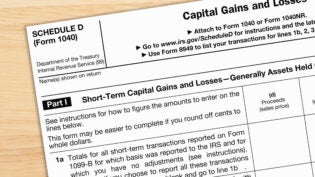
According to The Small Business Administration, only about half of new businesses make it to their fifth anniversary and beyond. Factors that contribute to the failure rate can range from indirect influences, such as poor location and poor customer experience, to direct financial components, such as lack of profits and poor fiscal management.
While you can always change locations or completely overhaul your approach to customer service to help you dig out of those indirect ditches — once your finances start to spiral out of control, it will have a domino effect on all other areas of your business and make it almost impossible to recover.
According to a U.S. Bank study, a whopping 82% of businesses that fail do so because of cash flow issues. Don’t leave your numbers to chance or take a guesstimation approach to your finances — arm yourself with an understanding of retail math basics and put the odds of running a profitable, long-lasting business in your favor.
Retail Math 101 — The Formulas You Need to Know
Now for the good stuff, the nitty-gritty, the meat and potatoes (or the tofu and potatoes for our vegan friends) — the core of what you need to know and retail math definitions explained. Let’s jump right into some alphabet soup with ten basic retail math formulas.
Note: Every item you sell to a customer is at a cost to you. For example, although you may sell a pair of shoes for a retail price of $50, your cost to buy the shoes from the vendor is $20. Recording your costs for each item is necessary to calculate your COGS, gross margin, and so many other important figures.
Cost of Goods Sold (COGS)
Beginning Inventory + Purchases – Ending Inventory = COGS
COGS is a figure that reflects the costs involved in selling a product. The most basic component of this calculation is the difference between the costs of your starting inventory and sales, minus your ending inventory.
If you want to figure out your COGS on just those shoes over a one-year period. Take the beginning inventory value — for this example, we’ll use $5,000. Add any additional stock purchases you made throughout the year — for this example, we’ll use $2,000. Subtract that from your ending inventory value — for this example, we’ll use $3,000 and that will equal your COGS.
$5,000 + $2,000 – $3,000 = $4,000 COGS
Gross Margin (GM) & Gross Margin Percentage
Total Sales – COGS = GM
GM / Total Sales X 100 = GM%
Now that you know your COGS, we can talk about gross margin. This is your total sales minus your COGS.
If you want to know your gross margin for the second quarter of this year. You would take your total sales for that period — $20,000. Subtract your COGS for the same period — $4,000. Which leaves you with a gross margin of $16,000.
To convert to a percentage, take the gross margin, $16,000 divided by your sales, $20,000 and then multiply by 100. So it would looks something like this: $16,000 / $20,000 = 0.8 x 100 = 80%. Here is a great tool to easily calculate your gross margin and profits.
$20,000 – $4,000 = $16,000 GM
$16,000 / $20,000 = 80% GM%
Gross Margin Return on Investment (GMROI) Percent
GM / Average Inventory Cost X 100 = GMROI%
To determine what kind of profit you are going to make on an item or a particular product category, you will need to determine the GMROI. First, you will need to determine your Gross Margin. For argument sake, let’s say that number is $16,000 based on the previous example. Divide this number by the average inventory costs, let’s say $10,000. Then multiply that number by 100 to find the percentage.
$16,000 / $10,000 = 1.6 x 100 = 160% GMROI
Markup & Markup Percentage
Retail Price – COGS = Markup
Markup / Retail Price X 100 = Markup %
After all that multiplying and dividing, here’s an easy one for you. Markup is simply the difference between the COGS and the retail price. Let’s revisit the shoe example from the COGS illustration. Your cost for those shoes is $20. You set the retail price at $50, making your markup $30. To find the markup as a percent, take the Markup Value, divide it by the Retail Price, and multiply by 100 to find the percentage.
$50 – $20 = $30 Markup
$30 / $50 = 0.6 X 100 = 60% Markup
Markdown & Markdown Percentage
Original Retail Price – New Retail Price = Markdown
Markdown / Original Retail Price X 100 = Markdown %
This is the difference between the original retail price and the new lower retail price. If you know how to mark up a product, then you need to know how to mark them down without completely deflating your margins. Markdowns are permanent price reductions, not discounts for a limited time, and typically occur because an item has sat on the shelf for too long. This is why it’s imperative to have inventory control procedures, so you don’t overstock.
Every item that you have to markdown has a direct negative impact on your margins. Let’s say that you’ve come to the end of the season and that same pair of shoes is still sitting on the shelf for $50. You decide to mark it down to $40 making the difference between the original price and the markdown price $10. To find the markdown percentage, take the $10, divide by $50 and multiply by 100. The formula would look like this: $10 / $50 = 0.2 x 100 = 20 percent.
$50 – $40 = $10 Markdown
$10 / $50 = 0.2 X 100 = 20% Markdown
Stock to Sales Ratio
Beginning Inventory / Ending Inventory = Stock to Sales Ratio
The stock to sales ratio is a good indicator of being overstocked on a particular inventory item. It tells you that for every 1 item you sold, you have X quantity on hand. Let’s say at the beginning of the month your starting inventory for that pair of shoes is 100. As the month progresses, you sell 30 pairs. To determine your stock to sales ratio, you take your beginning inventory and divide by your ending inventory.
100 / 30 = 3.33 Stock to Sales Ratio
Sell Thru Percentage
# of Items Sold / Beginning of the Month (BOM) Inventory = Sell Thru %
The sell thru percentage is the exact opposite or inverse of your sales to stock ratio. This is the amount of inventory you sold versus the amount you have on hand. Using the same numbers as the stock to sales ratio, you will take the number of items sold during the month, which is 30. Divide that by your BOM inventory, 100 and multiply by 100 to get the percentage.
30 / 100 = 0.3 X 100 = 30% Sell Thru
Inventory Turnover Rate
COGS / Average Inventory Value = Inventory Turnover Rate
This measures the ratio in which inventory is sold over a given amount of time. To find this number, you will need to take your COGS and divide it by the average inventory value. Again, sticking with the same shoe inventory example to make it as easy as possible, you would take your COGS, $4,000 and divide that by your average inventory value, let’s say $10,000, to find your turnover rate.
$4,000 / $10,000 = 0.6% Turnover Rate
Inventory Shrinkage
Booked Inventory – Physical Inventory = Inventory Shrinkage
Calculating inventory shrinkage can be something that is a little tedious because you have to take a physical inventory count. However, it’s necessary to perform periodically so you how much inventory is lost to theft, damage, miscounts, or supplier fraud.
Shrinkage is calculated by taking the total value of your inventory that on the books, or what you’re POS system is calculating and subtracting it from your physical inventory. For this example, let’s say your booked inventory is $50,000. You do a physical inventory count that shows an actual value of $45,000.
$50,000 – $45,000 = $5,000 Inventory Shrinkage
Operating Expense Ratio (OER)
Operating Costs / Sales = OER
Knowing your operating expenses is key to understanding your business performance. To make sure your operating costs aren’t exceeding profits and to help you compare to industry benchmarks. Let’s say your yearly operating costs are $50,000 and your yearly sales are $125,000. Take your operating costs and divide it by your sales over the same period and multiply by 100 to find the percentage.
$50,000 / $125,000 = 0.4 X 100 = 40% OER
Tools to Simplify Retail Math
After all that numbers talk and alphabet soup, breathe a sigh of relief because here’s the best part! There are tools out there that can do all those calculations for you. Except for the physical inventory count that is. Sorry friends, but that one is still on you.
When it comes to simplifying retail math, there is no better tool than a point-of-sale (POS) system. Not only will a POS system serve as the focal point of the checkout process, it will also provide detailed reports and critical insights into your business performance by automating a lot of these retail math formulas.
Not all point-of-sale systems are created equal. This makes choosing a POS system a little more complicated. But with the right knowledge and research, you can easily find one that works best for your business. However, before you roll out the dough and buy one, ensure that you know exactly what it is capable of and what your deal breakers are — the features you can’t live without.
Most importantly, make sure it has robust reporting and inventory management features so a lot of the retail math formulas we talked about will be automatically calculated. You can even take it a step further and find a POS system that integrates into your accounting software to streamline your financials even further.
In fact, automation can empower your small business in many ways from your sales and marketing processes to your back-office functions. If you have questions or suggestions, tell us about them in the comments below.
This friendly tutorial was provided by the team at ShopKeep — the friendly, intuitive iPad point-of-sale (POS) system that makes retail math a breeze for a wide range of retail businesses from cafes to boutiques and everything in between.
 Author: As Content Writer at ShopKeep, the number #1-rated iPad Point of Sale System, Nicole Walters leverages her background in communications and her extensive experience in the payment and POS industry to create valuable content that addresses real problems and solutions for small business owners.
Author: As Content Writer at ShopKeep, the number #1-rated iPad Point of Sale System, Nicole Walters leverages her background in communications and her extensive experience in the payment and POS industry to create valuable content that addresses real problems and solutions for small business owners.












